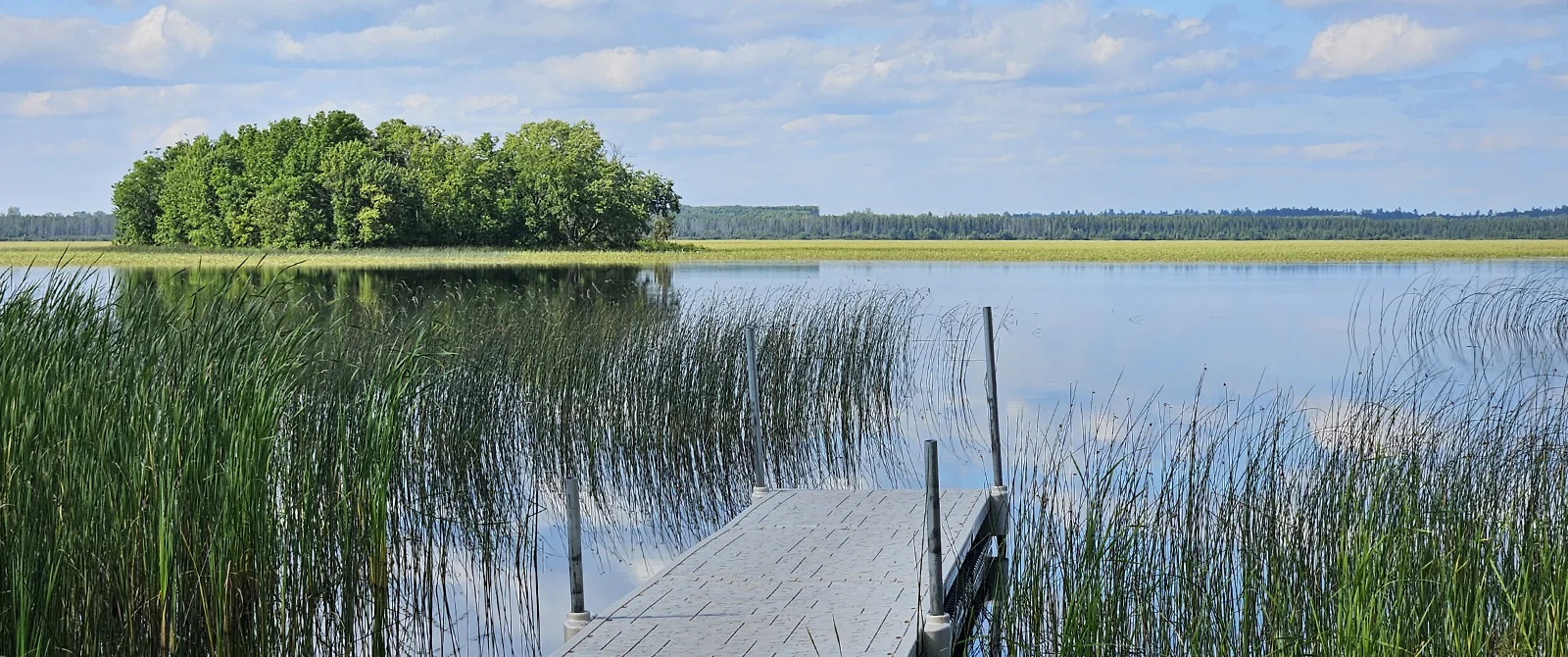Originally published in Lake of the Woods Area News, Volume 55, Number 5, Winter 2025
Put a plan in place. Ensure there’s enough science and management expertise. Coordinate actions bi-nationally. That’s our mission.
Every summer, the International Joint Commission (IJC) hosts public and technical meetings in the Rainy-Lake of the Woods watershed, moving between Canadian and American locations each year. This year, the International Rainy-Lake of the Woods Watershed Board (IRLWWB) hosted its Basin Week meetings the week of August 11-15 in and around Tower, MN.
Amidst a couple of days of committee and project team meetings in Tower, board members and affiliates also had the opportunity to meet with the Bois Forte band, learn about their history, and visit their wild rice harvesting beds on Lake Vermilion. The board’s Adaptive Management Committee (AMC) also hosted a public technical workshop in International Falls, MN, focused on enhancing the tools used to assess ecological and social impacts of water levels management on international boundary waters.
The watershed board’s Water Levels Committee manages water levels and flows in the Namakan chain of lakes, Rainy Lake and Rainy River, directing dam operators along these waterways to open and close gates as required to maintain water levels within prescribed operating limits, known as rule curves. Rule curves describe for each day of the year the minimum and maximum water levels advisable to optimize conditions for ecosystems, wildlife, people, and industries that share the waterways. Rule curves are formally reviewed every 15 years (most recently, in 2015-2018), and between review periods, the AMC assesses whether the rule curves are delivering expected outcomes. The AMC examines what impacts rule curves have on the ecosystem and, to some extent, the communities within the management area.
This summer’s workshop was an opportunity for citizens, technical experts, Indigenous knowledge keepers and others to consider the range and types of ecosystem and socio-economic impacts related to rule curves we should measure and the outcomes we want to see. Some examples include protecting fish spawning success, seeing more wild rice productivity, ensuring good nesting success for loons and other wildlife, and protecting cultural heritage sites from flooding or erosion. Input received from this workshop is guiding how the IJC and its partners will assess rule curve performance until the next scheduled rule curve review in 2033.
In October, the IJC hosted its annual week of meetings in Ottawa for boards to appear before the six commissioners and provide updates on current activities or issues of concern. This fall, the IRLWWB’s appearance focused on briefing Commissioners on the board’s recommendations to guide the governments of Canada and the United States in developing international water quality objectives (WQO) for Rainy-Lake of the Woods. These WQO, if adopted, would become goals shared among governments and agencies to improve water quality and address the long-standing challenge of harmful and toxic algae blooms on Lake of the Woods. (Readers are encouraged to review our article in the Early Spring 2024 issue of the Area News, where we discussed these proposed WQOs in detail.) The next step in the process to secure international WQOs for Rainy-Lake of the Woods is for the IJC to approach the two federal governments with its recommendations. Once the governments come to agreement on the matter, they would then delegate any applicable responsibilities for oversight and implementation to the IJC, agencies, or others—a lengthy process, but one we are pleased to have underway.
